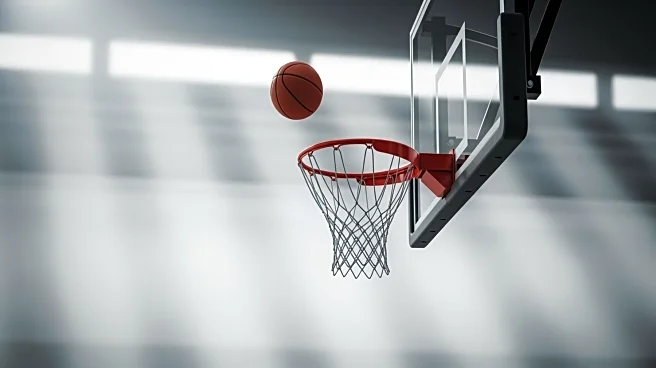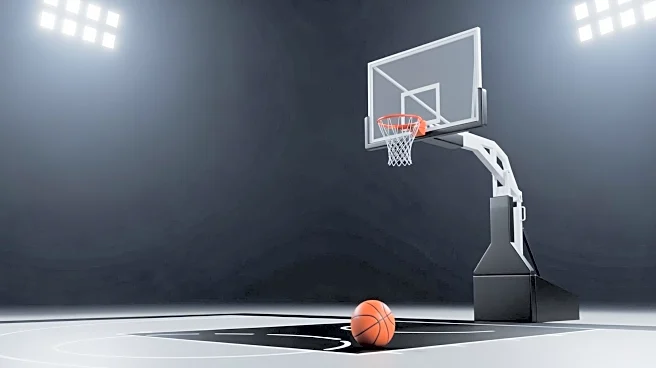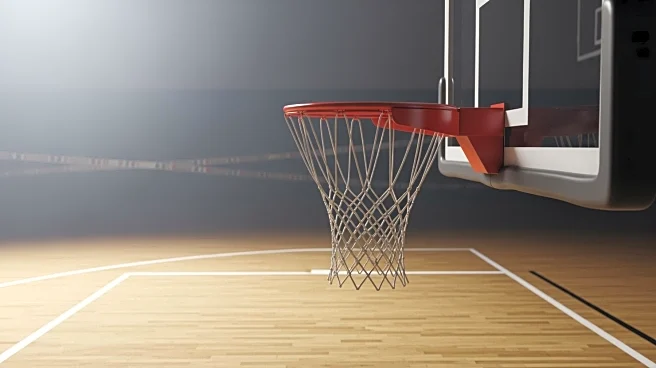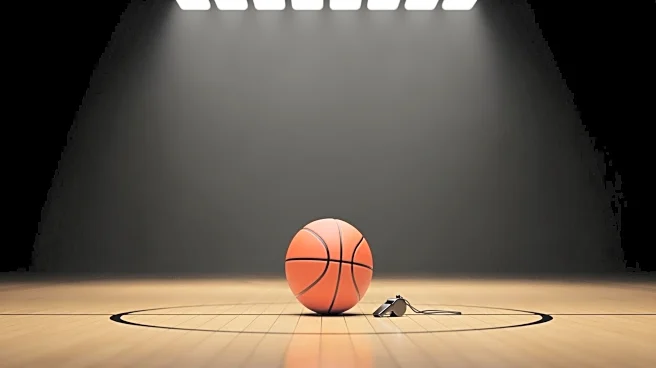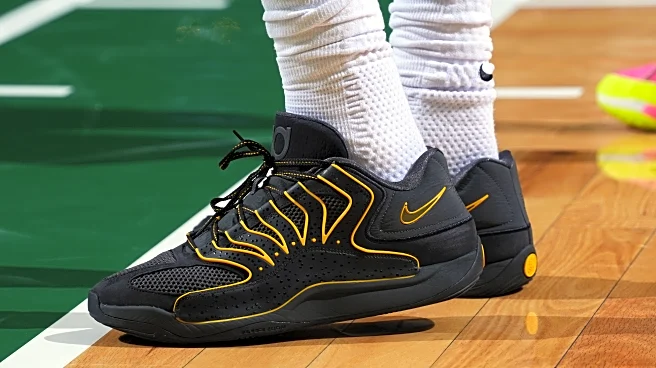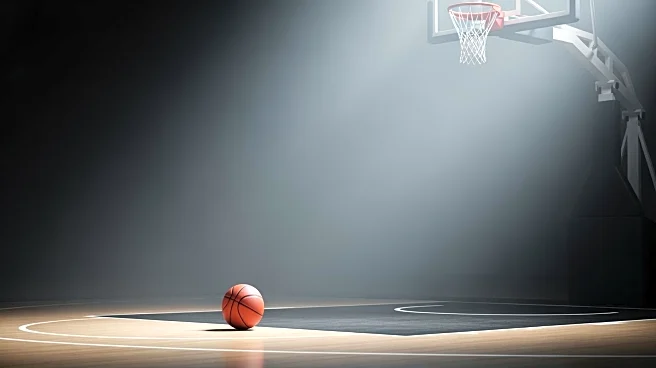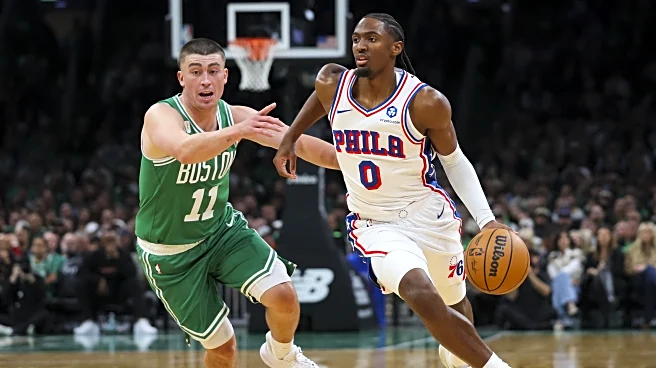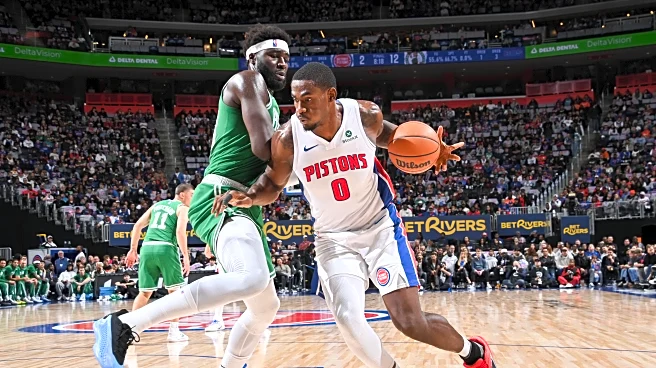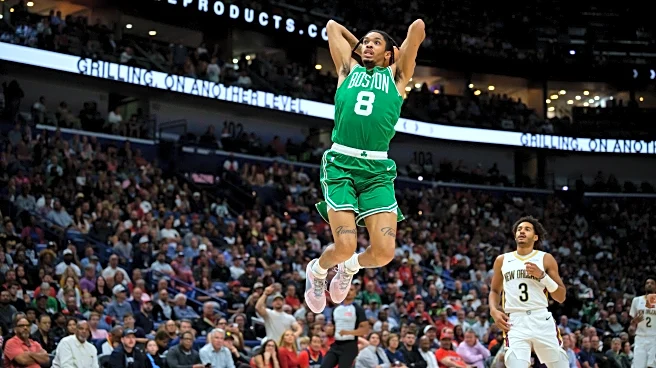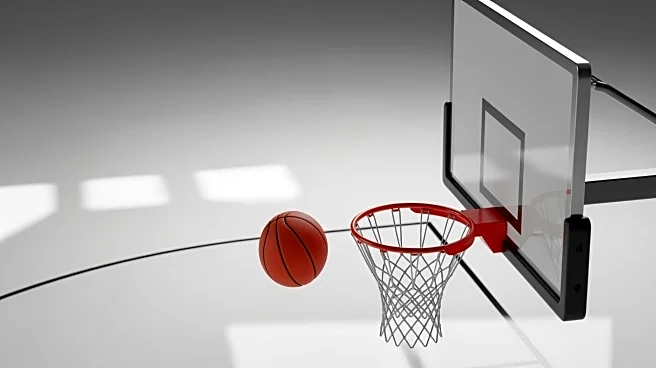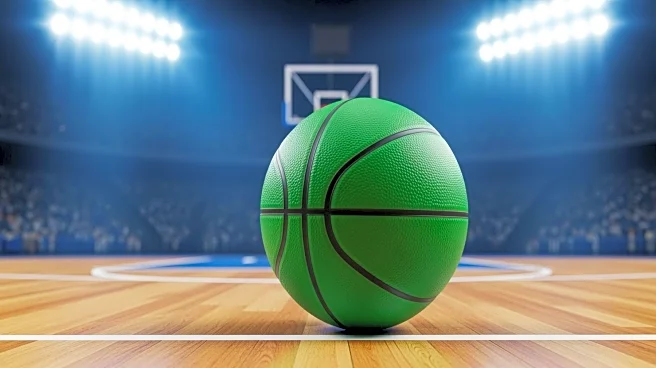What's Happening?
The Boston Celtics are facing significant challenges in defensive rebounding, ranking as the worst team in the league in this category. Over their 0-3 start, the Celtics have managed to secure only 58
percent of their opponent's missed shots, a notable decline from last season when they ranked seventh. This issue was highlighted in their recent 119-113 loss to the Detroit Pistons, where the Pistons capitalized on offensive rebounds, scoring 30 second-chance points. The Celtics' roster changes, including the loss of size during the offseason, have exacerbated this problem. Jaylen Brown has acknowledged the need for improvement, emphasizing the importance of rebounding to resolve broader defensive issues.
Why It's Important?
The Celtics' struggles with defensive rebounding have broader implications for their season performance and playoff prospects. Effective rebounding is crucial for maintaining defensive stability and preventing opponents from gaining additional scoring opportunities. The team's inability to secure rebounds could lead to more losses, affecting their standings and morale. Jaylen Brown's call for personal and team improvement highlights the urgency of addressing this issue. If unresolved, the Celtics may face challenges in competing against teams with strong offensive rebounders, impacting their ability to secure wins and advance in the league.
What's Next?
The Celtics are set to face the New Orleans Pelicans, a team known for strong offensive rebounding, particularly with Zion Williamson. This upcoming game presents an immediate test for the Celtics' ability to improve their rebounding performance. Coach Joe Mazzulla has emphasized the need for physicality and toughness in securing rebounds. The team's response to this challenge will be critical in determining their ability to overcome current deficiencies and improve their season trajectory.
Beyond the Headlines
The Celtics' rebounding issues may also reflect broader strategic and roster management challenges. The loss of size during the offseason suggests potential gaps in team composition and planning. Addressing these issues may require not only tactical adjustments but also considerations for future roster changes to enhance physical presence and rebounding capabilities.
